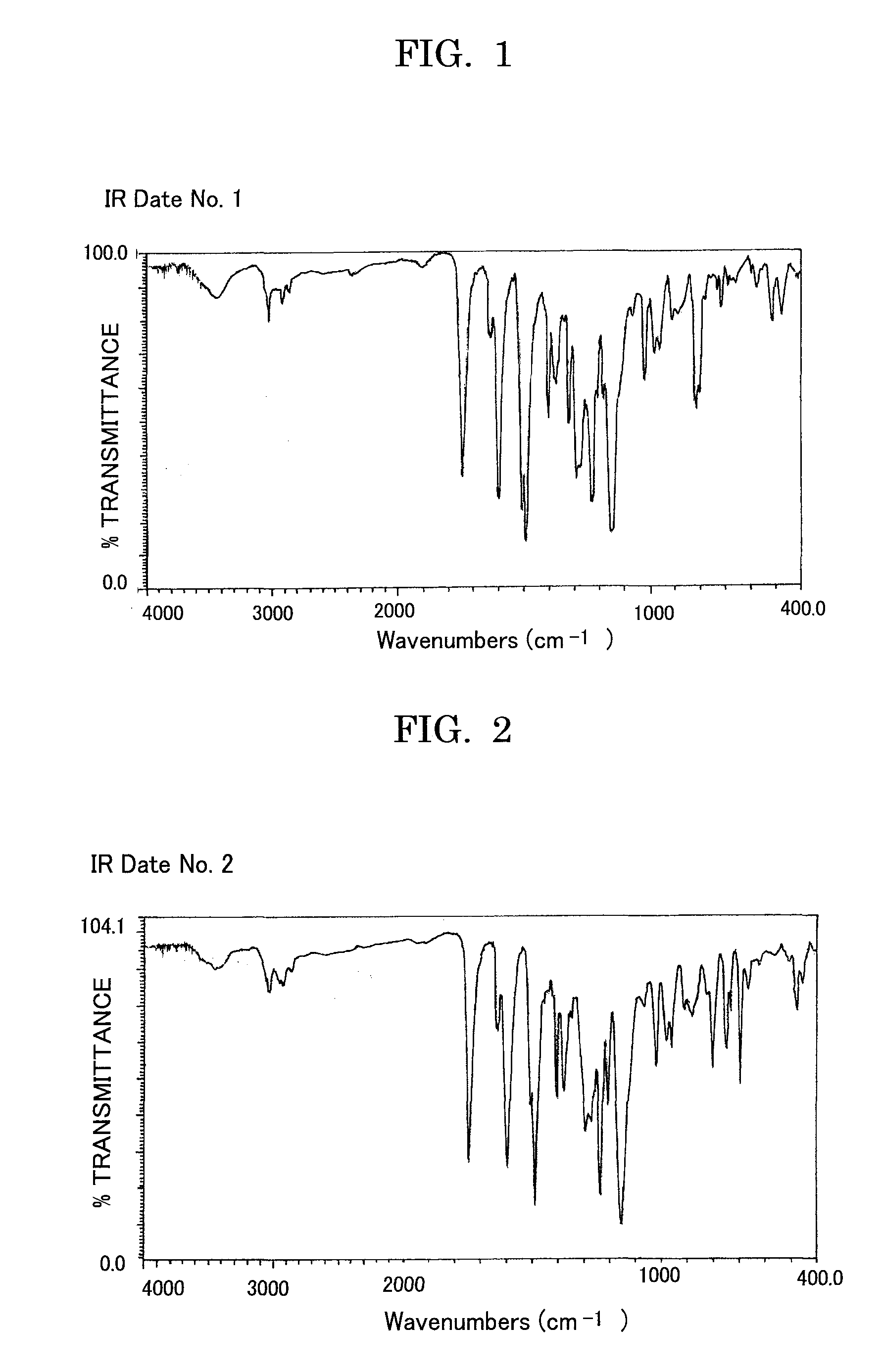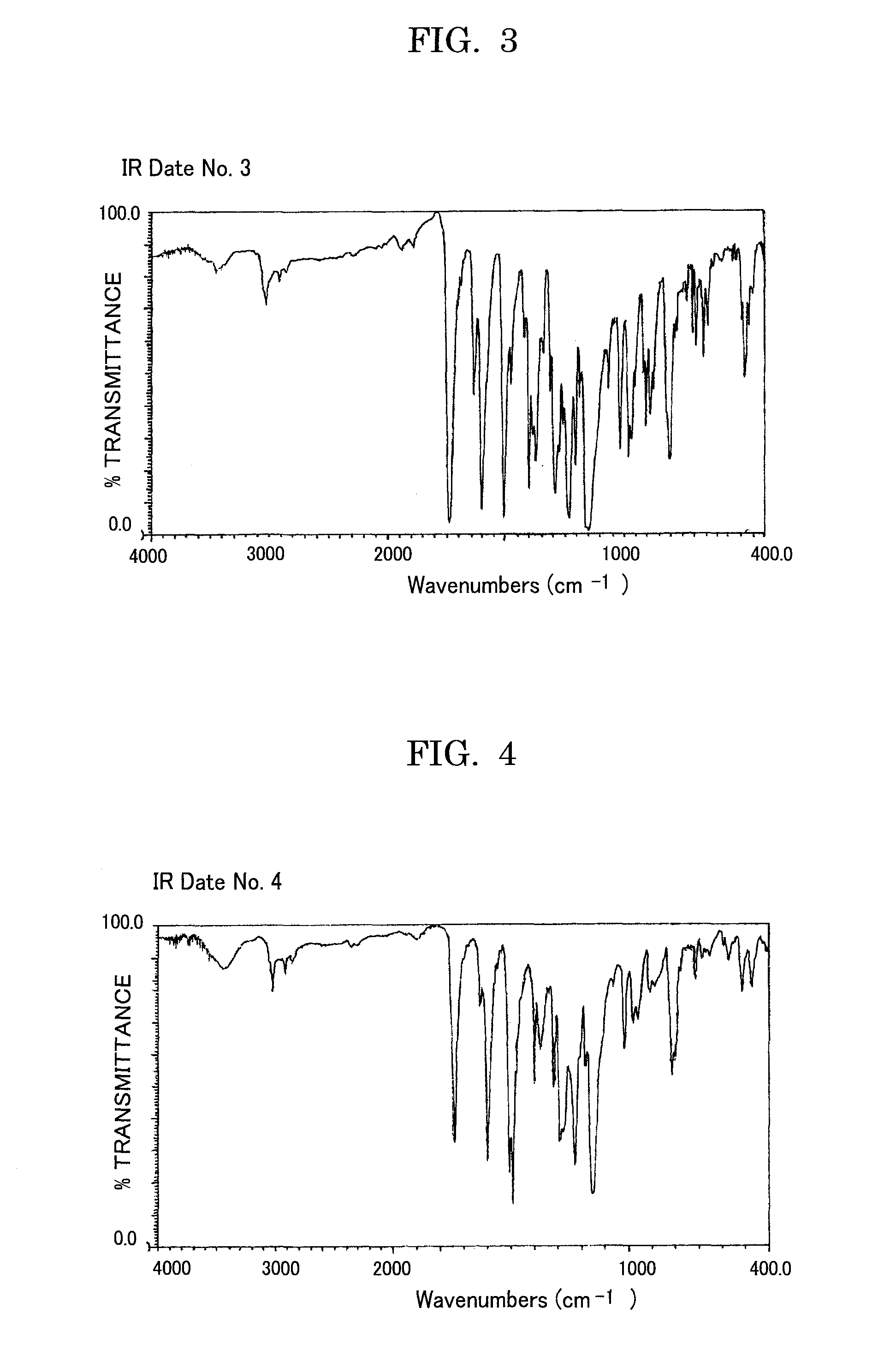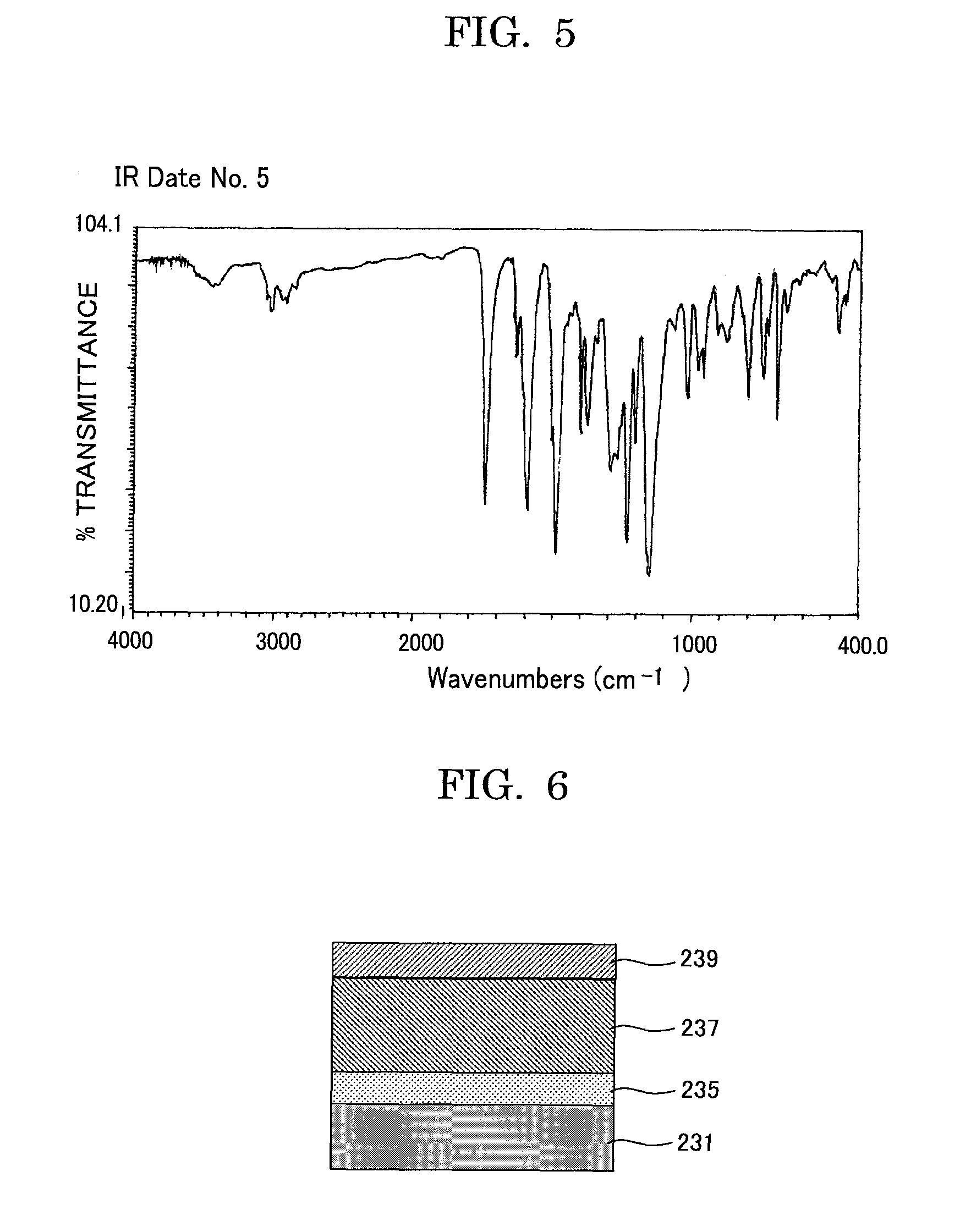Acrylic ester compound and manufacturing intermediate thereof, method for manufacturing acrylic ester compound, and latent electrostatic image bearing member, image forming method, image forming apparatus and process cartridge
a technology of acrylic ester and compound, which is applied in the direction of electrographic process, corona discharge, instruments, etc., can solve the problems of insufficient properties, reduced essential charge transport properties, and inability to obtain sufficient functions, etc., to achieve high film strength, high hardness, and sufficient cross-linking and curing
- Summary
- Abstract
- Description
- Claims
- Application Information
AI Technical Summary
Benefits of technology
Problems solved by technology
Method used
Image
Examples
synthetic example a-1
Synthesis of N,N-di-p-tolyl-N′,N′-bis(4′-hydroxybiphenyl-4-yl)benzidine
[0374]In a reaction vessel equipped with an agitator, thermometer and a cooling pipe, 2.73 g of N,N-di-p-tolyl-N′,N′-bis(4′-methoxybiphenyl-4-yl)benzidine and 100 mL of methylene chloride were placed. While the vessel was being cooled with ice, 10 mL of a 1M methylene chloride solution of boron tribromide was delivered by drops into the vessel, and furthermore the mixture was reacted at the same temperature for three hours. Then, the reacted solution was poured into ice water and extracted with methylene chloride. The organic layer was washed with water and separated, and it was then dried with magnesium sulfate and subjected to vacuum concentration. The residue was purified with a silica gel chromatography with a mixture of n-hexane and ethyl acetate as a solvent, where the ratio of n-hexane to ethyl acetate in the mixture was one to one. Thus, the objective product was obtained with the yield of 2.53 g.
synthetic example a-2
Synthesis of Illustrative Compound (D-35)
[0375]In a reaction vessel equipped with an agitator, thermometer, a cooling pipe and a dropping funnel, 2.44 g of N,N-di-p-tolyl-N′,N′-bis(4′-methoxybiphenyl-4-yl)benzidine, 1.22 g of triethylamine and 50 mL of tetrahydrofuran were placed. Into the vessel, a mixture of 1.0 mL of acryloyl chloride and 2.0 mL of tetrahydrofuran was delivered by drops. The vessel was subjected to reaction for 30 minutes at a room temperature. When the reaction was completed, the reacted solution was poured into ice water and extracted with ethyl acetate. The extract was then dried with magnesium sulfate and subjected to vacuum concentration. The obtained residue was purified with a silica gel chromatography with toluene as a solvent. Thus, the objective product was obtained with the yield of 1.92 g.
[0376]The data of the objective product were as follows:
[0377]Melting point=113.5° C. to 115.5° C.;
[0378]APCI-MS: m / z=737;
[0379]UV-absorption spectrum in methylene c...
synthetic example a-3
Synthesis of N,N-diphenyl-N,N′-bis(4′-hydroxybiphenyl-4-yl)-3,3′-dimethylbenzidine
[0382]In a reaction vessel equipped with an agitator, thermometer and a cooling pipe, 6.04 g of N,N′-diphenyl-N,N′-bis(4′-methoxybiphenyl-4-yl)-3,3′-dimethylbenzidine and 200 mL of methylene chloride were placed. While the vessel was being cooled with ice, 30 mL of a methylene chloride solution of boron tribromide was delivered by drops into the vessel, and furthermore the mixture was reacted at the same temperature for six hours. Then, the reacted solution was poured into ice water and extracted with chloroform. The organic layer was washed with water and separated, and it was then dried with magnesium sulfate and subjected to vacuum concentration. The residue was purified with a silica gel chromatography with a mixture of toluene and ethyl acetate as a solvent, where the ratio of toluene to ethyl acetate in the mixture was nine to one. Thus, the objective product was obtained with the yield of 5.47 g...
PUM
| Property | Measurement | Unit |
|---|---|---|
| Thickness | aaaaa | aaaaa |
| Thickness | aaaaa | aaaaa |
| Fraction | aaaaa | aaaaa |
Abstract
Description
Claims
Application Information
 Login to View More
Login to View More - R&D
- Intellectual Property
- Life Sciences
- Materials
- Tech Scout
- Unparalleled Data Quality
- Higher Quality Content
- 60% Fewer Hallucinations
Browse by: Latest US Patents, China's latest patents, Technical Efficacy Thesaurus, Application Domain, Technology Topic, Popular Technical Reports.
© 2025 PatSnap. All rights reserved.Legal|Privacy policy|Modern Slavery Act Transparency Statement|Sitemap|About US| Contact US: help@patsnap.com



